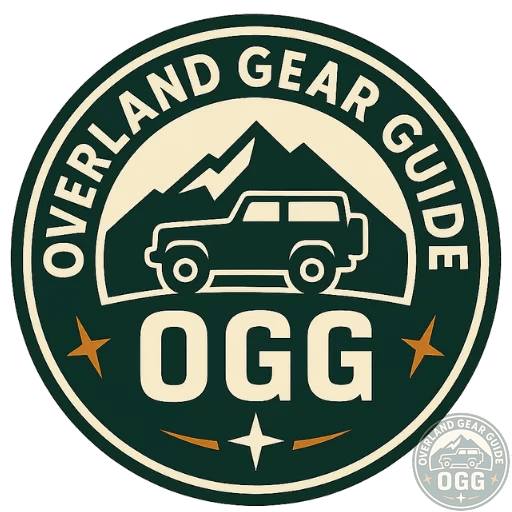Don’t Make This Mistake: Your 4WD’s “Recovery Points” Might Be a Myth

This guide shows you how to identify true, rated recovery points, what to install front and rear, the golden rules for safe pulls, and the minimal kit to carry on every trip.
“Hooks” Under Your 4×4: Tie-Downs vs. Recovery Points
Those simple loops or tabs under many vehicles look recovery-ready, but most are engineered for static transport loads (truck or ship), not the violent, dynamic shock of a snatch. Attach a kinetic rope to one and it can tear free — a lethal projectile.
- Thin stamped steel, no markings → almost certainly a shipping tie-down.
- Bolted to bumper skin/light brackets → not structural.
- Rated points are thick, gusseted, use high-tensile hardware, and often have visible WLL/brand marks.
| Feature | Shipping Tie-Down | Rated Recovery Point |
|---|---|---|
| Material/Build | Thin stamped tab | Thick plate/gussets or forged hook |
| Mounting | Bumper skin / light bracket | Direct to chassis rails with high-tensile bolts |
| Markings | None | WLL / brand / part no. |
| Use Case | Static transport restraint | Dynamic off-road recovery |
What Makes a Recovery Point Safe?
Engineering
- Chassis connection: Spreads load into rails/cross-members.
- High-tensile hardware: Correct grade, torque, thread-locker where spec’d.
- Clear rating: Working Load Limit (WLL) stamped/etched and from a reputable brand.
System matching
- Shackles (soft/steel) rated to = or > point.
- Rope/strap MBS sized to vehicle mass (often 2–3× GVW for kinetic ropes).
- Use a bridle across twin front points to split load.
Front Setup: Twin Points + Equalisation Bridle
Two front points with a short equalisation strap (bridle) keep the pull straight and halve peak loads per mount. Never pull from a bullbar/nudge bar unless it explicitly provides rated points.
Demon Front Tow Hook Mounting Bracket w/ 3/4" D-Ring (Tacoma 2009–2023)



- Fitment: Toyota Tacoma 2009–2023 (factory skid only).
- Function: Replaces factory tow hook; adds rated anchor at the chassis.
- Build: Laser-cut steel, powder-coated; typical shackles 36–48k lb break strength.
- Install: Reuse bolts; torque to spec; fit D-ring pins.
Rear Setup: Hitch Receiver Recovery Block (Not the Tow Ball!)
If your vehicle has a frame-mounted towbar, a 2" receiver + rated recovery block is a robust anchor. Choose blocks with dual pin holes so you can orient the shackle horizontally or vertically to align the pull.
2" Shackle Hitch Receiver Kit (w/ 3/4" D-Ring & 5/8" Lock Pin)

- Centered load path for predictable rear recoveries.
- Includes receiver insert, D-ring, and locking pin.
Heavy-Duty Solid Recovery Towing Kit (2" Receiver)

- WLL: ~11,000 lb (typical); ~45,000 lb break strength.
- Powder-coated, electro-galvanized hardware; dual-orientation pin holes.
- D-ring isolators reduce rattle and protect paint.
Golden Rules for Using Recovery Points
Do this
- Use rated points, shackles, and ropes only.
- Split loads with a bridle across twin points.
- Add a line damper to kinetic ropes and winch lines.
- Clear the red zone (line-of-pull) of people.
- Communicate with clear hand/voice signals.
Avoid this
- Pulling from tow balls, bullbars, or tie-downs.
- Side-loading shackles or twisted bridles.
- Snatching repeatedly without cooling intervals.
- Mismatched ratings in your recovery system.
Minimal Safe Kit (Starter List)
- Rated front recovery points (ideally a pair) + equalisation strap/bridle.
- Rear: 2" receiver + rated recovery block (never the tow ball).
- Quality 20–30 ft kinetic rope or snatch strap sized to vehicle mass.
- Soft shackles (UHMWPE) or rated bow shackles (D-rings).
- Winch damper/recovery blanket.
- Gloves, shovel, and reliable comms.
Rhino USA Heavy-Duty Recovery Combo (30′ Strap + Shackle Hitch)




A tidy, capability-boosting bundle for new rigs: long strap for gentle, progressive pulls plus a receiver anchor to keep loads centred.
Disclosure: Some links are affiliate. If you buy through them, we may earn a small commission at no extra cost to you.
FAQ — Quick Answers
Is a factory screw-in tow eye (many European cars) OK for recovery?
Soft shackle or steel D-shackle?
How strong should my kinetic rope be?
© Overland Gear Guide — Tested in the field by real overlanders.

